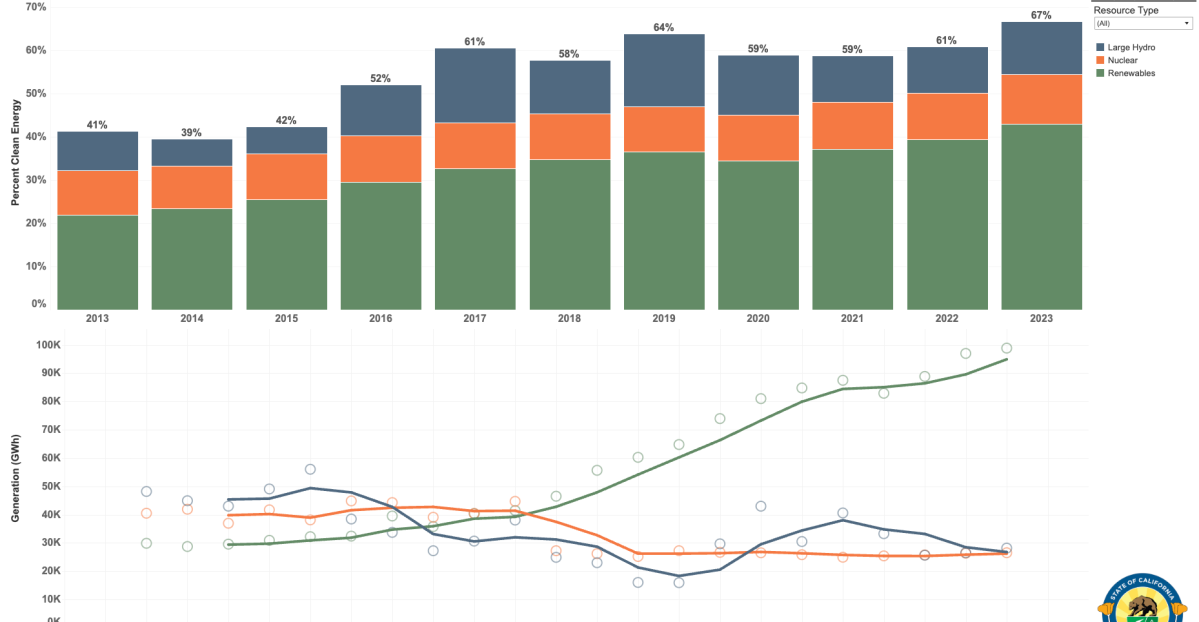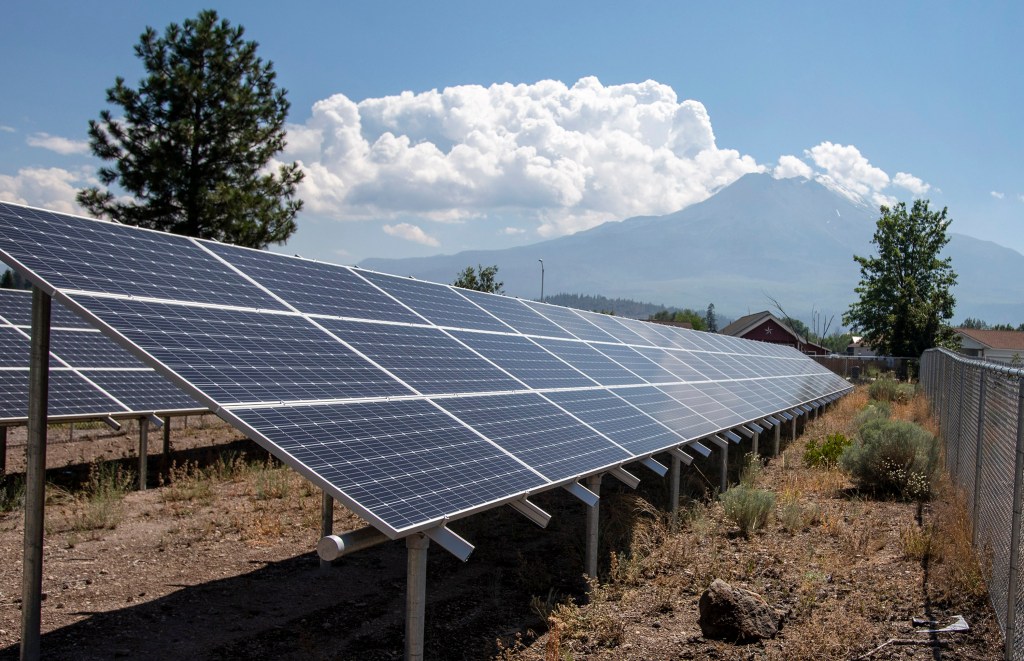Summary
Stats released Monday showed that in 2023, the states estimated annual clean energy percentage (energy produced from nuclear, large hydro, and renewable sources like solar or wind) crossed the two-thirds mark,
Source: The Verge

AI News Q&A (Free Content)
Q1: What are the primary sources of renewable energy in California, and how do they contribute to the state's energy mix?
A1: California is a leader in renewable energy production, primarily utilizing solar, geothermal, biomass, and hydroelectric power. As of 2018, the state ranked first in the nation for electricity generation from solar and geothermal sources. By 2023, California achieved a record with 67% of its energy coming from carbon-free sources, including nuclear and large hydro, alongside renewables like wind and solar, marking a significant increase from previous years.
Q2: How does California's renewable energy production compare to other states in the United States?
A2: California produces more renewable energy than any other state except Texas. The state's commitment to renewable energy is reflected in its leading position in solar and geothermal power generation. As of 2023, California's progress in renewable energy has contributed significantly to the overall increase in renewable energy production in the United States.
Q3: What are the challenges and proposed solutions for optimizing renewable energy investment in California?
A3: A significant challenge in California's renewable energy sector is optimizing investment planning for decarbonizing the electrical grid by 2045. Research has developed a mixed-integer model using surrogate level-based Lagrangian relaxation, optimizing a complex model with millions of variables. This innovative approach is projected to save California over $12 billion by offering a more accurate investment plan compared to existing methods.
Q4: How are machine learning techniques being used to analyze electricity market dynamics in California?
A4: Machine learning frameworks are being utilized to deconstruct the drivers of electricity market price events in California. These frameworks analyze various factors like renewable curtailment, transmission congestion, and energy storage optimization, which influence price formations. This advanced analysis is crucial for market design, renewable dispatch, and ensuring grid reliability in the modern electricity market.
Q5: What role does policy play in California's renewable energy transition?
A5: California's renewable energy transition is heavily influenced by policy commitments to carbon neutrality. The state's advanced stage in renewable energy transition is supported by strong policy frameworks aimed at increasing renewable energy capacity and reducing reliance on fossil fuels. These policies have positioned California as a global leader in renewable energy development.
Q6: How does public land management contribute to California's renewable energy goals?
A6: Under recent policy directives, California aims to permit significant renewable energy projects on public land. By May 2023, the Bureau of Land Management had approved projects meeting a substantial portion of the state's renewable energy goals. This initiative supports the broader objective of achieving 25 GW of renewable energy projects on public lands by 2025.
Q7: What are the economic implications of California's renewable energy advancements?
A7: California's advancements in renewable energy have substantial economic implications, including job creation and cost savings. The state's focus on renewable energy has not only reduced greenhouse gas emissions but also stimulated economic growth through investments in clean energy technologies and infrastructure.
References:
- Renewable energy in California
- Renewable energy in the United States
- Optimizing Deep Decarbonization Pathways in California with Power System Planning Using Surrogate Level-based Lagrangian Relaxation
- A Machine Learning Framework to Deconstruct the Primary Drivers for Electricity Market Price Events




